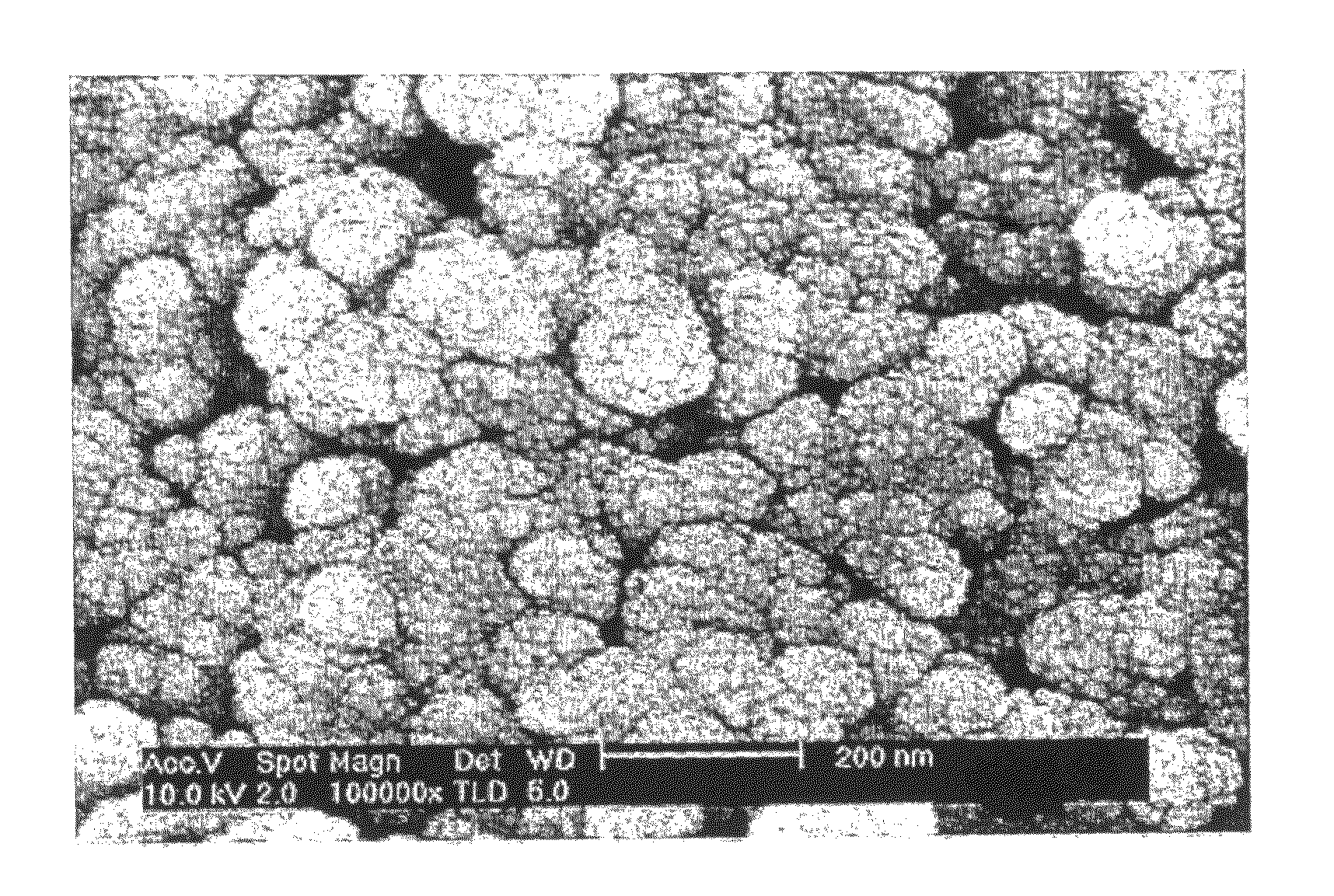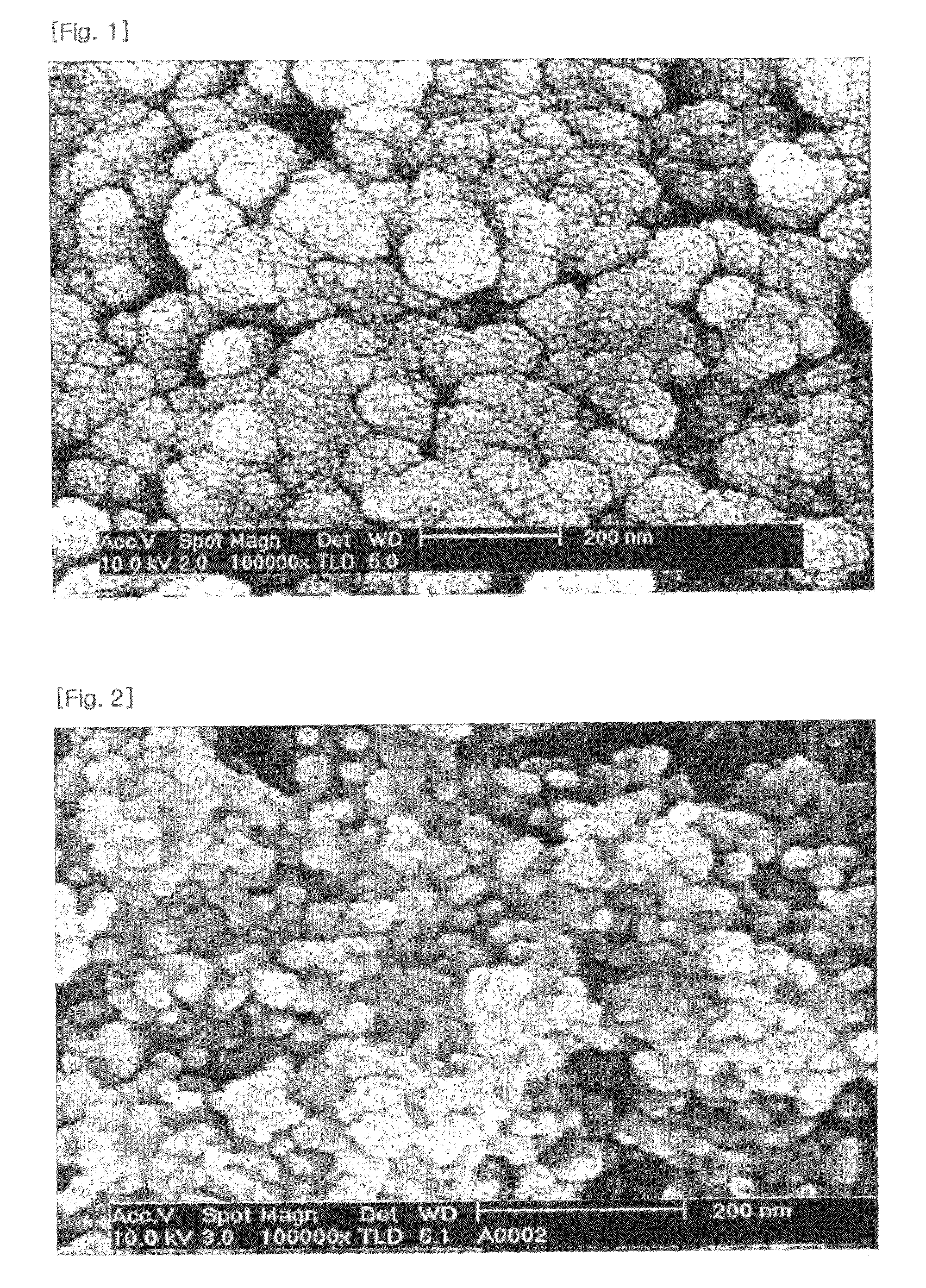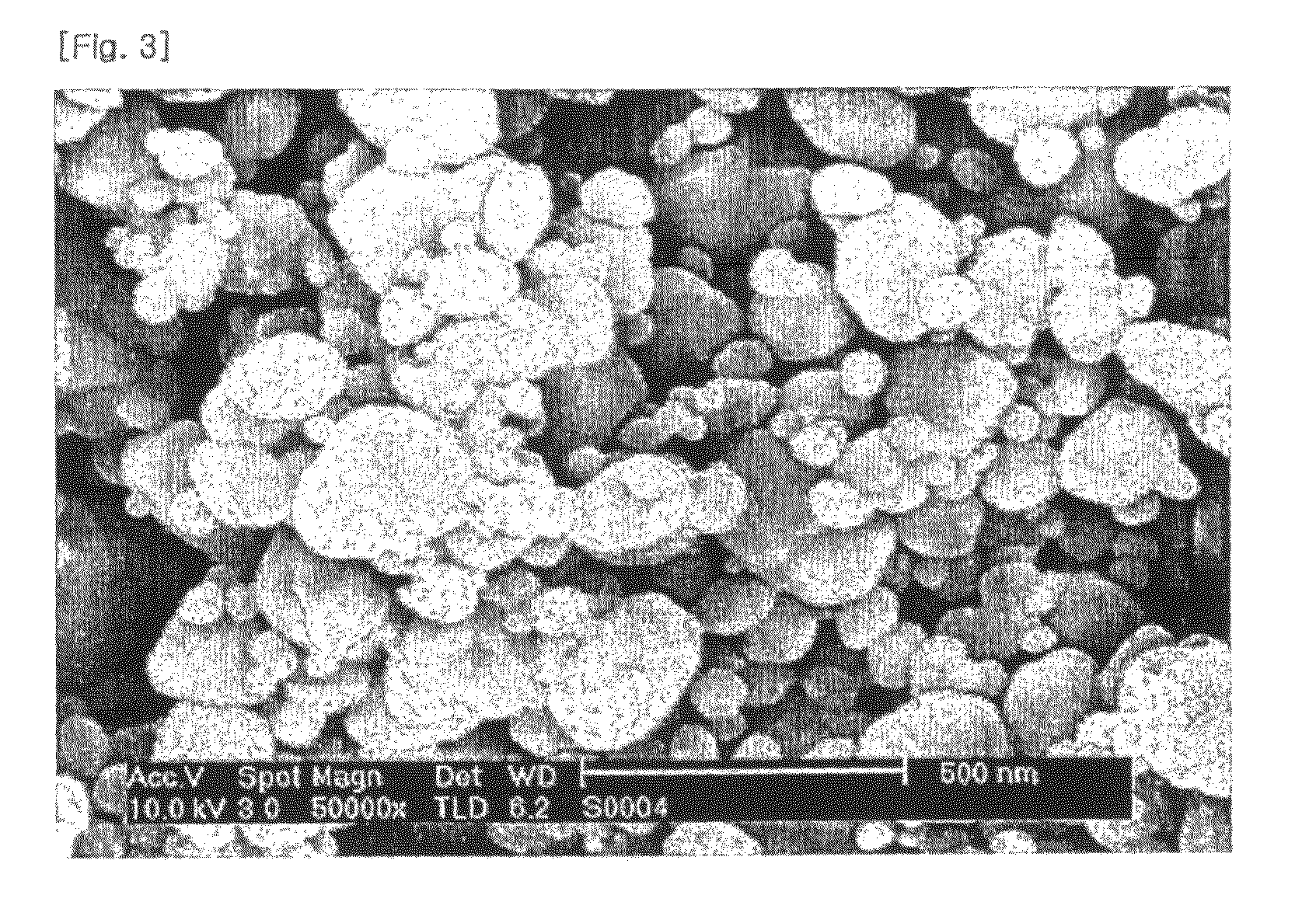Process for preparation of silver nanoparticles, and the compositions of silver ink containing the same
a technology of silver nanoparticles and silver complexes, which is applied in the field of process for preparing silver complexes and compositions of silver inks containing the same, can solve the problems of inability to mass produce, inability to use conventional liquid reduction methods to prepare metal nanoparticles, and inability to meet the requirements of mass production
- Summary
- Abstract
- Description
- Claims
- Application Information
AI Technical Summary
Benefits of technology
Problems solved by technology
Method used
Image
Examples
example 1
[0077]Viscous liquid of 34.89 gram (129.8 milimole), which is a mixture of 2-ethylhexylammonium 2-ethylhexylcarbamate and butylammonium butylcarbamate with a mole ratio of 7:3, and silver oxide of 12.03 gram (51.92 millimole) are input in a schlenk flask of 250 milliliter attached with an agitator and reacted, being agitated for two hours at a room temperature. As the reaction is progressed, complex compound is generated in black slurry in the beginning so that the color becomes thin to finally obtain yellow transparent liquid silver complex compound of 46.92 gram having viscosity of 7.8 pa·s, wherein the silver content is 23.65 wt % as a result of thermal analysis (TGA).
example 2
[0078]The first solution is prepared by adding the silver complex compound of 40.0 gram prepared in the Example 1 and isopropyl alcohol of 23.1 gram in a beaker of 100 milliliter and agitating them for ten minutes at a room temperature. And, the second solution is prepared by adding hydrazinemonohydrate of 1.2 gram and isopropyl alcohol of 50 gram in another beaker of 100 milliliter. The first solution and the second solution are injected to each inlet at a flux speed of 20 g / min. The solution injected through the inlet is reacted at a speed of 5,000 rpm using an agitator to obtain slurry of thick green. The prepared slurry is naturally precipitated to be filtered using a 1.2 um filter and then is washed using isopropyl alcohol three times, making it possible to obtain nano powder of green.
example 3
[0079]The first solution is prepared by adding the silver complex compound of 40.0 gram prepared in the Example 1 and isopropyl alcohol of 23.1 gram in a beaker of 100 milliliter and agitating them for ten minutes at temperature of 40° C. And, the second solution is prepared by adding acetol of 30. gram and isopropyl alcohol of 48.5 gram in another beaker of 100 milliliter. The first solution and the second solution are heated at temperature of 50° C. and then injected to each inlet at a flux speed of 10 g / min. The solution injected through the inlet is reacted at a speed of 5,000 rpm using an agitator to obtain slurry of thick red-green. The reaction filtrate of the prepared slurry is removed by using a centrifuge and then is washed using isopropyl alcohol three times, making it possible to obtain nano powder of green.
PUM
| Property | Measurement | Unit |
|---|---|---|
| temperature | aaaaa | aaaaa |
| temperature | aaaaa | aaaaa |
| temperature | aaaaa | aaaaa |
Abstract
Description
Claims
Application Information
 Login to View More
Login to View More - R&D
- Intellectual Property
- Life Sciences
- Materials
- Tech Scout
- Unparalleled Data Quality
- Higher Quality Content
- 60% Fewer Hallucinations
Browse by: Latest US Patents, China's latest patents, Technical Efficacy Thesaurus, Application Domain, Technology Topic, Popular Technical Reports.
© 2025 PatSnap. All rights reserved.Legal|Privacy policy|Modern Slavery Act Transparency Statement|Sitemap|About US| Contact US: help@patsnap.com



